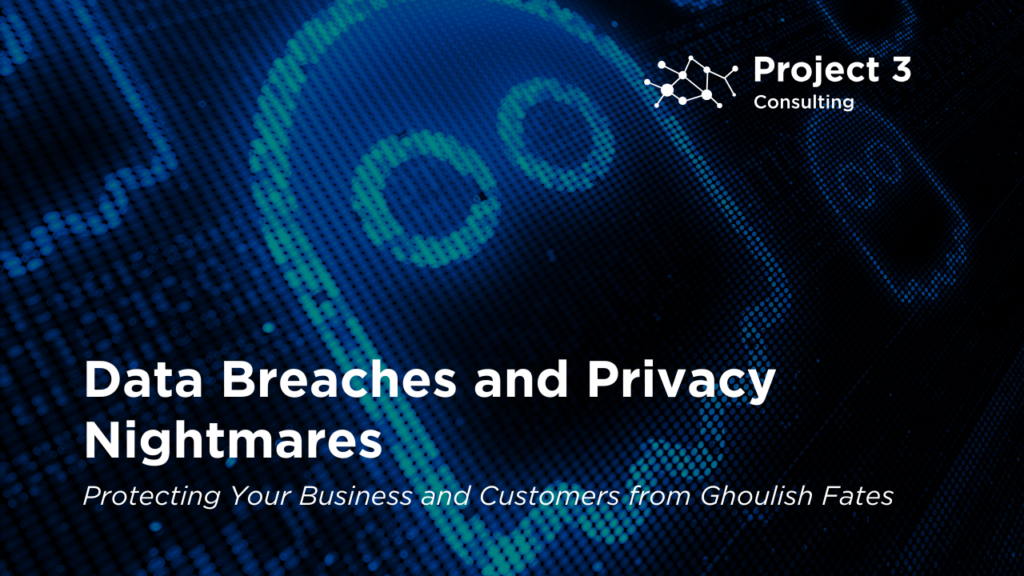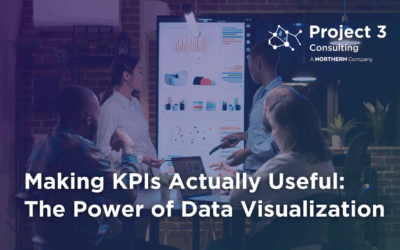
As Halloween approaches, the air is thick with the scent of pumpkin spice—and perhaps a hint of dread. In the spine-chilling world of MarTech, data is both a precious treasure and a lurking ghost ready to haunt your business. With every click, marketers are entangled in a web of data-driven decisions, but beware! With great data comes great responsibility. Data breaches and privacy violations can transform your marketing strategy into a horror story, leaving financial ruins and reputational corpses in their wake. Join us on this eerie journey as we explore the common risks, compliance requirements, and best practices for avoiding these MarTech security nightmares.
The High Cost of Data Breaches: A Haunted House of Horrors
Imagine opening your front door on Halloween, only to find a ghastly figure with a sign that reads, “Data Breach.” In MarTech, a data breach can lead to terrifying consequences. When customer data is compromised, the repercussions can haunt your business long after the last trick-or-treater has left.
- Financial Penalties: Regulatory fines under GDPR and CCPA compliance can reach the heights of a haunted castle—millions of dollars lost!
- Customer Trust Erosion: Once trust is broken, it’s harder to regain than a lost soul. Customers may flee faster than a ghost at dawn when they learn their data isn’t safe.
- Operational Mayhem: A breach often necessitates extensive remediation, reconfiguration, and—dare we say it—re-staffing in the worst-case scenarios.
Just consider the frightful data breaches faced by Mailchimp in 2022, where attackers accessed sensitive data from over 300 accounts due to compromised employee credentials. This chilling reality underscores the urgent need for a proactive data breach prevention approach before your reputation meets its doom.

The Compliance Conundrum: Navigating the Haunted Forest of Regulations
As if data management wasn’t spooky enough, the MarTech landscape is also haunted by the spirits of privacy regulations like GDPR and CCPA. Compliance isn’t just a good idea; it’s the enchanted protection spell against heavy fines and other ghoulish consequences.
A notable example of a company failing to honor opt-out requests is Sephora, which faced significant legal repercussions and a monster $1.2 million dollar penalty for violations of the California Consumer Privacy Act (CCPA). The California Attorney General’s office found that Sephora did not provide a proper mechanism for consumers to opt out of the sale of their personal information, such as lacking a “Do Not Sell My Personal Information” link on its website. This oversight allowed for extensive tracking of consumer behavior without adequate consumer consent, highlighting the importance of implementing effective privacy measures to avoid legal repercussions
Common Compliance Pitfalls:
- Improper Consent Management: Obtaining valid, informed consent for data collection is essential. Don’t be the business that ignores this!
- Failure to Honor Opt-Outs: Ignoring user opt-out preferences not only risks non-compliance but also opens the door to those frightfully scary fees.
- Lack of Data Transparency: Customers should be able to access and control their data. Failing to provide this access is like leaving them in the dark on Halloween night.
Best Practices: To avoid a witch’s curse, conduct regular audits and educate your team on privacy laws to ensure everyone is aware of their responsibilities.
The Risks of Over-Collecting: Avoiding Data Hoarding
As the saying goes, “Data is the new oil”—but collecting excessive data is akin to hoarding treasures in a haunted attic. It increases risk without necessarily adding value.
Secure Storage Tips:
- Encrypt sensitive data to ward off unauthorized access.
- Implement role-based access control (RBAC) so only those that require access can access customer data.
- Regularly purge data that is no longer necessary, especially after seasonal campaigns—don’t let it fester like a ghost in the attic!
For example, Apple exemplifies effective data minimization by implementing strict practices that prioritize user privacy. Through features like App Tracking Transparency, Apple requires apps to obtain user consent before tracking their activity across platforms, ensuring that only necessary data is collected. This approach not only helps the company comply with privacy regulations but also builds customer trust by minimizing data collection and emphasizing user control over personal information. By showcasing a commitment to privacy, Apple sets a standard for avoiding data hoarding in the MarTech space.
The Third-Party Threat: Ensuring Vendor Security
Beware the third-party vendors lurking in the shadows! While they can offer essential services like analytics and customer data platforms, they also pose significant risks to your data security.
Tips for Securing Third-Party Tools:
- Choose vendors with robust third-party data security protocols. For instance, Segment, a popular customer data platform, is known for its strong security measures, including data encryption and compliance with privacy regulations.
- Review vendor contracts for security guarantees regularly.
- Establish a “zero-trust” policy, limiting third-party access to only what is necessary—no need to let any unnecessary ghosts in!
Building a Privacy-First MarTech Stack to Avoid Data Breaches
To escape the horror show that is data breaches, design a MarTech stack that prioritizes data protection from the start. By adopting a privacy-first approach, you not only comply with regulations but also build trust with your customers.
Key Elements:
- Data Minimization: Collect only what you need—no more hoarding!
- Privacy by Design: Incorporate privacy controls into your data collection and storage processes from the beginning. For example, when Salesforce integrated privacy settings directly into their platform, it allowed users to manage consent and data sharing effectively, significantly enhancing trust and compliance.
- Routine Security Audits: Schedule regular audits to detect vulnerabilities—don’t wait for the ghost to show itself!
Proactive Crisis Management: Preparing for the Inevitable Ghost
Even with the best preparations, data breaches can still happen. Be ready with a solid response plan to limit damage and maintain customer trust.
Elements of an Effective Response Plan:
- Immediate Containment: Quickly identify and isolate the breach.
- Transparent Communication: Inform affected customers quickly and clearly about what has happened; don’t leave them in the dark!
- Remediation and Prevention: Address the breach’s cause and take steps to prevent future occurrences.
Protecting Your Business from the Shadows
As the spooky season rolls in, remember that data breaches and privacy concerns are ever-present risks in MarTech. With careful attention to data breach prevention, third-party data security, and compliance practices, businesses can safeguard their customer data and reputations. By building a privacy-first MarTech stack, you can transform potential nightmares into a safer, more trustworthy experience for your customers.
Don’t let your MarTech strategy fall victim to the dark arts of data breaches. At Project 3, we’re here to help you create a secure MarTech environment. Reach out today to ensure your data remains safe from ghouls and goblins alike!




